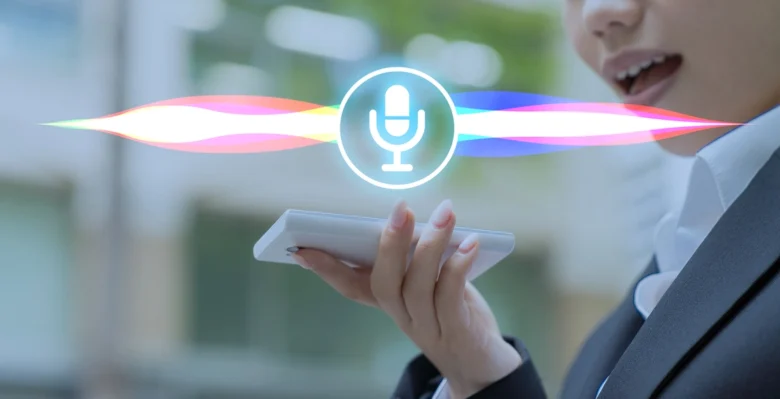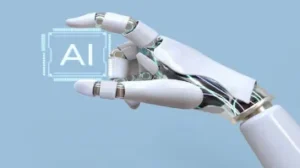Voice AI is quietly changing the way we work, communicate, and live. From asking Siri about the weather to controlling smart home devices with voice commands, AI is making our interactions more natural and intuitive. Beyond simple questions, this revolution is also changing how we manage medical appointments and work more efficiently. As voice recognition technology advances, science-fiction possibilities for human-computer interaction are emerging. Voice AI in everyday life marks a technological shift toward a more conversational and accessible way. Understanding these shifts helps us understand the opportunities and challenges of this technological revolution. Voice AI is changing not only how we use technology but also how we interact with digital systems.
The Rise of Voice AI:
The shift of AI from experimental to mainstream is one of the biggest technological shifts of the past decade. Tech giants have invested billions of dollars in natural language processing algorithms to understand the nuances of context, accent, and conversation. Siri, Alexa, Google Assistant, and Cortana are all well-known brands with unique features and integration capabilities. In 2013, the error rate for voice recognition was 25%; today, the error rate for major platforms is below 5%. Thanks to this development, voice-enabled AI is now useful for everyday applications. To reach a global audience, the technology now supports dozens of languages and dialects. Smart speakers have already found their way into millions of homes, ushering in a new category of voice-enabled products. Voice-enabled AI is also driving innovation in automotive systems, mobile apps, and augmented reality.
Using Voice-Enabled AI for Everyday Communication:
Voice-enabled AI has revolutionized everyday communication with technology and with each other. Voice-to-text capabilities enable users to text more quickly and easily while driving, cooking, or multitasking. Voice translation services remove language barriers for travelers and international businesspeople. Voice-enabled AI assistants can read emails, dictate responses, and make suggestions based on context and communication patterns.
Technology enhances the communication experience for people with disabilities by providing alternative methods to use devices and services. Real-time transcription, spam filtering, and smart call screening enhance the quality of voice calls. Social networks offer voice messages that are more intimate and expressive than text. These developments make communication more natural and efficient, reduce typing, and enable hands-free communication.
Voice AI in the Smart Home:
Voice AI is transforming smart home technology by responding to natural language requests and adapting to user preferences. By speaking to a voice assistant, homeowners can control lighting, temperature, security, and entertainment. In addition to basic instructions, AI can learn home habits and provide recommendations for energy conservation and safety. With a single command, voice AI can dim lights, adjust thermostats, and play music on many smart devices.
Kitchen appliances with voice AI can set timers, cook meals, and order groceries when supplies are low. Home security systems can use voice recognition to identify authorized users, allowing them to update statuses or alert homeowners about unusual behavior. This technology makes smart homes more accessible to the elderly and people with limited mobility. Speech AI allows people to monitor their homes and adjust settings via their phones.
Voice AI in Healthcare:
The healthcare sector is using voice AI to improve patient care, administrative processes, and medical documentation. With voice recognition software, doctors can dictate patient medical records directly into electronic health records, saving time and improving accuracy. Through smart speakers or mobile apps, voice AI can remind patients to take medication, track symptoms, and provide health advice to manage chronic diseases. Voice AI supports remote consultations and symptom descriptions on telemedicine platforms.
Voice analysis can detect mood or stress changes in mental health applications, enabling early intervention. Simple spoken instructions can help elderly patients manage medications, appointments, and emergencies through speech AI. The device can also help visually impaired patients access health information and communicate with doctors. Clinical decision support systems based on speech AI can help doctors quickly access medical information and treatment guidelines during patient interactions.
Issues and Thoughts:
Voice AI technology has many advantages, but it also faces numerous obstacles that limit its popularity and usability. Voice assistants must always listen for wake-up calls, raising privacy concerns about data collection and storage. Voice accuracy issues can lead to user confusion and poor communication due to dialects, background noise, and technical language. Systems can misinterpret commands or respond inappropriately due to context and nuances.
Malicious attackers can hijack voice commands, creating security vulnerabilities. Voice AI automates customer service and administrative tasks, raising concerns about unemployment. The digital divide means that not everyone can benefit from the advantages of speech AI, potentially exacerbating disparities. Cultural and linguistic biases in AI training data can harm the interests of specific groups. Voice AI can also harm communication and lead to people becoming reliant on technology for basic activities.
Future Trends in Voice AI:
Future speech AI will deliver more complex and integrated experiences, changing the way we use technology. Conversational AI will become more natural and context-aware, enabling longer, more meaningful, and more human conversations. Voice AI will more easily connect with augmented and virtual reality, providing an immersive voice-activated experience.
Voice AI will enhance emotional intelligence to recognize and respond to human emotions and stress. Multilingual capabilities will be improved, enhancing the accuracy and naturalness of real-time translations. Voice AI will learn voice patterns, preferences, and habits to personalize the experience. Voice AI mentors can personalize educational learning. Edge computing will enhance the offline capabilities of speech AI and reduce latency and privacy concerns. IoT integration will lead to voice-activated smart cities and connected communities.
Voice AI Contributes to Healthy Technology Habits:
As voice AI becomes more popular, healthy technology habits are essential for digital health and balanced technology use. Voice AI supports hands-free interaction to access information and complete tasks, reducing screen time and supporting healthier technology habits. Setting boundaries for rest, exercise, and family time through voice reminders can improve work-life balance. Voice AI can offer meditation, breathing exercises, and mental health services through voice commands.
Voice AI allows users to control smart home devices without a smartphone or tablet, making it more effective to create technology-free zones. Voice AI makes it easy to stay connected and exercise by allowing you to listen to information or control music hands-free. Voice AI reduces technology addiction by providing information and enjoyment without visual stimulation and endless screen scrolling. Voice automation of common actions reduces device contact time while maintaining productivity and convenience.
A Voice-Controlled Future:
Voice AI technology is a significant step toward more natural and intuitive human-computer interactions and will continue to improve and expand. This technology makes digital experiences easier, more efficient, and integrated into our daily lives. More advanced and ubiquitous voice AI will change the way we work, communicate, and interact with our environment. Understanding the pros and cons of speech-enabled technology is crucial for success.
We can benefit from speech AI while simultaneously protecting our digital health by developing healthy technology habits and paying attention to privacy and security. Speech AI can remove barriers to digital participation by making technology more inclusive and user-friendly for all groups. Speech AI integration that enhances human interactions and capabilities, rather than replacing them, will be successful.
FAQs:
1. How accurate is voice AI technology in understanding different accents and languages?
Voice AI systems can now recognize a wide range of accents and languages, with up to 95% accuracy for major languages. Background noise, speech rate, and dialects can affect performance. To improve recognition rates for different groups, companies train their systems using different datasets.
2. Is voice AI technology safe for personal use?
Voice AI uses encryption, cloud storage, and speech recognition authentication. Users should review data sharing settings and consider the implications for their privacy. Most major platforms allow users to delete voice recordings and customize privacy settings.
3. Can voice AI replace customer service representatives?
Voice AI can handle simple customer service requests, but complex issues requiring empathy, creativity, and sophisticated problem-solving skills require human agents. Most successful AI applications combine AI efficiency with human experience to respond to emergencies.
4. What are the current limitations of voice AI?
Contextual understanding, noise, misunderstandings of commands, and technical or specialized jargon are currently limiting factors. Sarcasm, humor, and subtle differences in speech also pose challenges for this technology.
5. How will voice AI impact employment in various industries?
Voice AI can automate routine tasks and create jobs in AI development, maintenance, and human-machine collaboration. The technology doesn’t replace humans; it enhances their skills, allowing them to focus on creative and emotional tasks.



